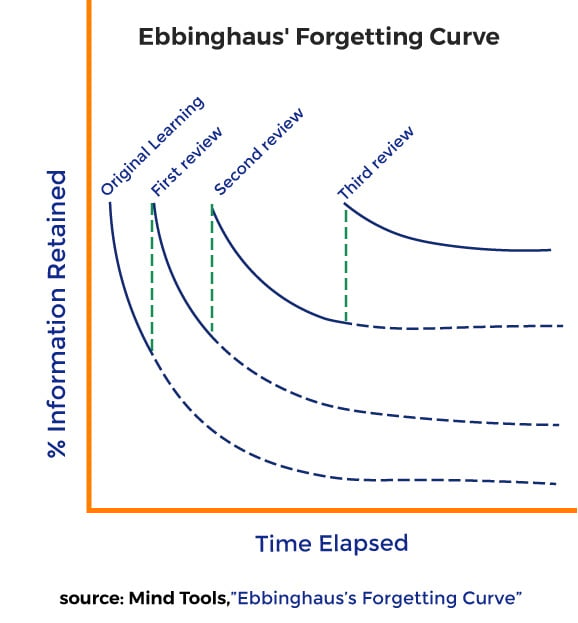![]()
Can you easily connect the dots between employee learning, employee performance, and business performance?
Beyond a theoretical understanding of the benefits of a well-trained workforce to employee retention and the bottom line, do you have a clear system for measuring learning success?
Measuring the effectiveness of your training programs is a crucial part of a data-driven approach to learning that ensures alignment with business objectives. How else would you gauge success and make necessary improvements? How would you even know what success looks like for the employee and the organization?
While you need to report on metrics such as the number of employees trained, cost of training per employee, time spent in training, passing scores, etc. they don’t give meaningful insights into learner experience nor provide a deeper understanding of the extent of learning taking place. If you want to make sure you’re moving the needle and making real progress towards employee development and organizational goals, to need to track these seven vital learning KPIs.
7 Vital Learning KPIs
1. Knowledge Retention
This is one of the most important learning KPIs because training or any learning is pointless if your people don’t retain it. Given our human tendency to forget (as illustrated in Ebbinghaus’ Forgetting Curve, which shows how the passage of time affects memory) we know that 100% retention is a lofty goal, but it is crucial that programs solve for that inevitability.
How to solve for this:
- Ongoing assessments.
- Engaging material and learning methods.
- Beware of overwhelm from too much info at once, instead, go for smaller modules at regular intervals.
- Provide opportunities for application of knowledge right away.
- Follow up by giving trainees multiple opportunities for review.

2. Productivity and business performance metrics
The more effective your learning strategy, the greater the impact on business outcomes. Whether it’s in customer service improvement, a boost in sales, a productivity increase, or a decline in safety incidents, this is the proof that will validate the efficacy of your training programs.
It isn’t automatic, though. The link is not incidental but comes from defining learning objectives that tie directly to business goals.
Metrics such as “efficiency increase” measure productivity before and after training to show a tangible impact.
3. Course Net Promoter Score/Participant Satisfaction Score
Beyond engagement during the program, satisfaction with the program upon completion is a good indicator that learning occurred and will be applied. Surveys will determine this metric by asking questions related to learner confidence in the training received, and their likelihood of recommending the program to their colleagues.
A great way to get this feedback is during the training by embedding evaluations in the course, so it happens in real-time when it is still fresh in the learners’ minds.
4. Training Efficiency/Time to Proficiency
We know leaders want to see results, and the faster, the better. With that in mind, instructional designers must aim to shorten the learning curve by creating high learner engagement. For example, using gamification, making modules interactive, and paying close attention to user experience in the LMS are effective accelerators of learning.
.jpg?width=475&height=432&name=Training-Learning-Curve%20(1).jpg)
Training efficiency measures the speed with which trainees gain the skills and competencies. It has implications for how quickly they complete the programs and assessments and the incorporation of their new knowledge and skills into their role in a tangible, observable way. This is the test of true mastery.
5. Employee Engagement
Do your learners find the training program dull and tiresome, or engaging and relevant to their work? Was it practical and helpful, or difficult and confusing?
If it doesn’t hold their interest, that will affect their completion rates, pass rates, knowledge retention, participant satisfaction, and learning transfer.
Ultimately, you want your training programs to be well-received, so engagement data will help identify areas for improvement and keep you on course to make sure learning is happening.
6. Stakeholder satisfaction
It’s not all about the numbers. The best learning KPIs aren’t all quantitative. Stakeholder satisfaction is a qualitative measurement based on firsthand observation by team leaders, managers, and department heads who verify that the application of the learning is taking place.
This may come from monitoring performance metrics, such as sales figures, productivity reports, safety stats, or customer feedback.
7. Transfer of Learning/Application of Knowledge
What use is learning if it isn’t applied? If the purpose of learning is to improve employee on-the-job performance and by extension organizational performance, it must lead to practical use. When that isn’t happening, it’s an indicator that there is a disconnect and lack of alignment between the training program, performance goals, and company needs.
When there is a stumbling block preventing the translation of knowledge into applicable skills, possible reasons might include: a lack of relevance; poorly designed assessments; or poor training design because of a lack of understanding of business and employee needs.
Improve your chances of meeting this KPI by making the training more practical by using simulations, providing hands-on assessments so that courses are not 100% digital, and using learning data analytics to pinpoint any knowledge gaps or similar roadblocks to the application of skills.
Conclusion
Tracking these specific KPIs will ensure progress towards achieving organizational goals, and effective transfer of knowledge and skills both from the perspective of the delivery and the acquisition by the employee.
The goal is to use the data to continuously improve your L&D programs to eliminate any skill/knowledge gaps, ensure learner success, and achieve business goals.
Using an LMS that allows for easy reporting of the key metrics can be a significant change in increasing training effectiveness and impact.
Phenom eCloud is a comprehensive technology solutions provider committed to empowering businesses to overcome challenges, enhance their workforce capabilities, and achieve superior outcomes.



Leave a Comment